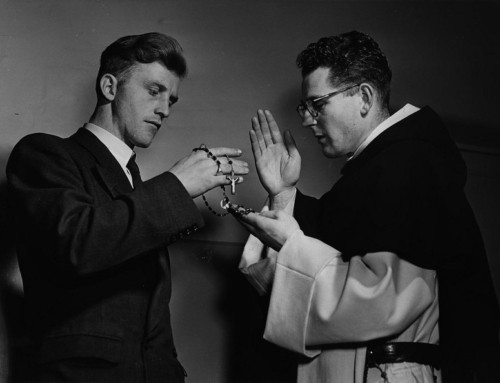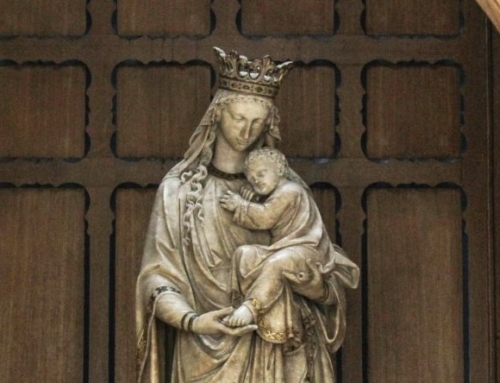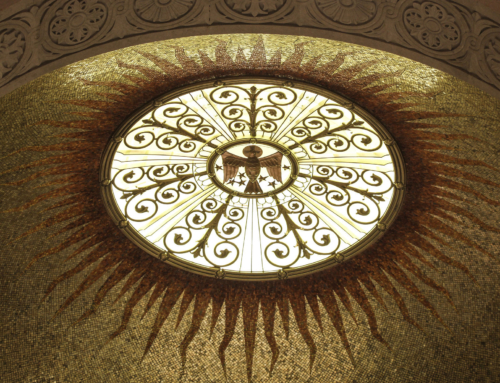Nicanor Pier Giorgio Austriaco, O.P., James Brent, O.P., Thomas Davenport, O.P., and John Baptist Ku, O.P. Thomistic Evolution: A Catholic Approach to Understanding Evolution in the Light of Faith. Washington: Cluny Media, 2016.
Early on in Thomistic Evolution, the authors make it clear that this book, even as it considers the question of evolution, is primarily an opportunity to preach the Gospel:
The good news that we will illustrate through and with these chapters on evolution and the Christian Faith is that one and the same God who created us with reason also gifted us with faith. (2)
Thomistic Evolution, which originally began online as thomisticevolution.org, marks the collective effort of four sons of the Dominican Province of St. Joseph: Nicanor Pier Giorgio Austriaco, O.P., a molecular biologist; James Brent, O.P., a philosopher; Thomas Davenport, O.P., a physicist; and John Baptist Ku, O.P., a systematic theologian. Drawing upon his area of expertise, each friar explores questions concerning whether and how the scientific theory of evolution is to be understood in relation to the Catholic faith. In the end, their efforts yield a strong and alluring result: how evolution fits into God’s plan. Good news indeed!
But it takes some time to get to this good news. Thomistic Evolution addresses the theory of evolution only in the last third of the book. The authors attempt first to build a strong foundation by addressing more fundamental matters: the nature of faith and reason and how they work together; the concept of causality; philosophical and theological accounts of God, creation, providence, free will, and chance; the problem of evil; and principles for biblical exegesis. The book’s wide-ranging scope lets it function as a self-contained introductory text. Readers do not have to reference outside sources to understand what is under discussion and what is at stake.
The book strikes the right balance between accessibility and sophistication. It is straightforward enough to be understood by almost anyone, but it is also clear in showing that the Catholic faith has robust answers to questions concerning the theory of evolution. Austriaco does an excellent job of clarifying what the current, post-Darwinian theory of evolution proposes and how it has corrected many earlier errors that put Darwinism in conflict with Catholicism. One such example is Austriaco’s explication of how a polygenic theory of human evolution can fit in with the Biblical account of the Fall. Polygenism is defined by Austriaco as “the theological theory that human beings are descended from several original first couples” (215). Initially, “Pope Pius XII ruled out polygenism because he could not imagine how an account of several original first couples could be reconciled with the Church’s teaching on original sin” (215). At that time, the widely accepted scientific model of human evolution was the Multi-Regional model, which claims that humans evolved independently in different parts of the world. Were this true, there is no way to account for how original sin could have been transmitted across these various regions. The advance in evolutionary biology, however, has led scientists to prefer an Out-of-Africa model over the Multi-Regional model. The Out-of-Africa model claims that all humans originally evolved in one location in Africa and from there spread to the rest of the world. Thus all the earliest human beings would have lived near each other, so it is possible to explain how original sin could have been transmitted to everyone then living “in the same way that Eve led Adam to sin” (240). This example illustrates how if there is an apparent contradiction between faith and science, as in the case of the Multi-Regional model, faith can act as a guide to help science look in the right direction for the truth. This is a striking example of how reason and faith work together to point to the truth.
In another chapter, Austriaco argues for the fittingness of evolution. It can be seen as part of God’s plan to share some part of His causality with creatures. This chapter is a beautiful example of what Brent describes elsewhere as the harmony of faith and reason. The two work together to help us understand the wonders of God’s creation and, even more wonderfully, of God himself. Not only does evolution fit with the Catholic worldview, but the process of evolution glorifies God. Thus to accept, understand, and teach evolution can itself be a way of communicating the Gospel.
Thomistic Evolution offers more than a Catholic response to the theory of evolution. It also serves as an excellent basis for examining the many questions posed by science in general to the Catholic faith. In fact, the format of the book lends itself far better to group study than to individual study and could easily form the backbone of a course at a parish or campus ministry to help the faithful understand the relationship between faith and reason. Each short chapter provides sufficient material for a weekly meeting; or the pace could be increased and connections among chapters could be looked at each week.
Chapters 13-18 by Ku are an excellent example of how properly to examine Scripture, and the book would be valuable even if these were the only chapters in it. Ku’s discussion of the four literal and three spiritual senses of scripture helps to demonstrate the difficulties of reading Scripture, yet also provides a clear guide for how to begin. Ku also provides help for the reader to see how differing interpretations of any passage can be acceptable, despite prima facie contradictions. I would highly recommend these chapters to anyone who appeals to the Bible as supporting evidence in a debate.
Davenort presents an excellent picture of creation consistent with both theology and physics. He discusses how a metaphysical account of creation allows for the possibility that any of the current physical theories of the beginning of the universe could be true while still recognizing that God is creator. He takes note that this account allows for a theory of evolution and has no difficulties harmonizing with such a theory.
While Thomistic Evolution should prove very helpful for any Catholic who is curious about the compatibility of faith and reason, I would caution against sharing the book with an atheist friend in the hopes of expecting an on-the-spot conversion. It is not the book’s intention to make the kinds of appeals that non-believers would find compelling on their own merits. However, the book can be an excellent resource when used as part of a conversation with non-believers. Each of the chapters was initially intended to be used as a single-page bulletin insert, and so, while some of the chapters do not have the space to lay out comprehensive arguments in support of their positions, they do suggest various lines of reasoning to explore. My caution is simply that these arguments might be unsatisfying to some readers if taken on their own. But they could be employed fruitfully in extended discussions. One such example is Chapter 12, “Divine Providence and the Mystery of Evil.” Considering that, as the Catechism of the Catholic Church states, “[t]here is not a single aspect of the Christian message that is not in part an answer to the question of evil” (CCC 309), it should not be surprising if, after reading this brief chapter, questions remain. For example, underlying much of the discussion in the chapter is the distinction between God’s active and permissive will. This can be a hard distinction to understand—namely how God, being good, can permit evil. As such, it would behoove the Christian participant in this conversation to explore the topic more fully beforehand, in order to anticipate questions from an atheist interlocutor.
Given this caveat, I highly recommend the book for believers who want to see a good case made that, whatever challenges opponents of the Catholic faith might issue, reason and faith are not set against one another in a perpetual war. They are mutually reinforcing. Both are necessary, as the authors show, for man to come to the fullest understanding of God and His creation we can have this side of heaven.
✠
Download a PDF of this review HERE



